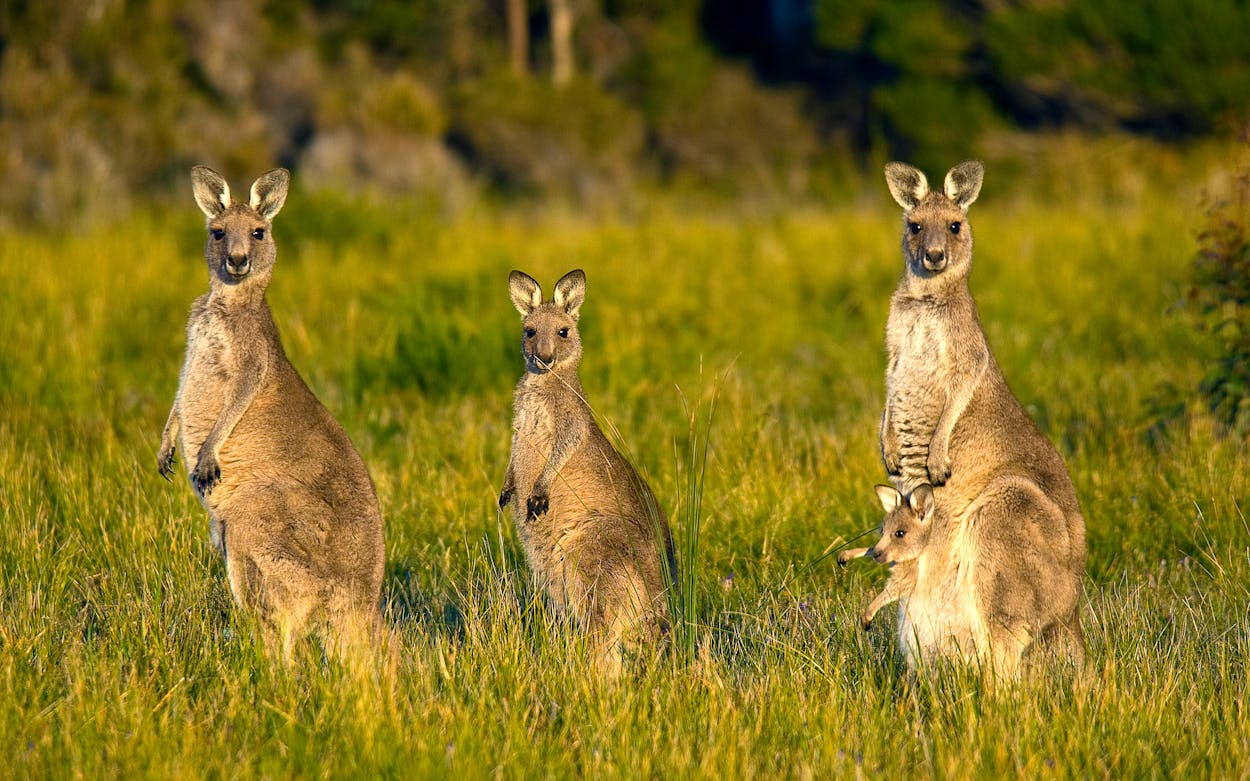A neighborhood in the North Texas town of Prosper had an unusual visitor earlier this month: a male kangaroo named Jax escaped from a nearby backyard, where he had been raised as a pet. Jax’s owner had to coax him back home with a bottle of milk. Less than a week later, another pet kangaroo named Nigel escaped his backyard home in Granbury and went on the lam for two days before hopping home. These are just the latest in a slew of kangaroo escapes across the state over the last few years, including in Mercedes, San Marcos, and Lumberton.
All of which, honestly, raises the question: You can keep a kangaroo as a pet in Texas? And how many are there, anyway?
The answer is yes and, it turns out, quite a few. Texas is one of thirteen states that allow people to own kangaroos as an exotic pet, and the species is particularly popular here, in part due to the similarities between Texas’s environment and their hot, arid Australian home. That’s not to mention our lenient exotic animal laws that allow hunting and owning species that would be off-limits in other states.
“Texas, there’s probably more [kangaroos] than most states,” says Cassidy Jagger, who owns a ranch for all kinds of Australian animals in Howe, in Grayson County. She said she gets phone calls every day from folks wondering about bringing one home as a pet.
Jagger’s ranch, Roos2U, offers educational events like classroom visits and field trips for children to get up close with kangaroos, wallabies, and other animals from down under. She also organizes volunteer trips to Australia to help rescue and care for injured wildlife during bushfire season. “That’s the biggest way we can have an impact,” Jagger says.
In Howe, Jagger’s ranch features large chain-link pens where the marsupial residents snack on a special diet of grasses and leaves. Volunteers regularly swap out water in blue plastic kiddie pools for the animals to cool off in, and large canopies overhead allow shade, especially in the hottest months of the Texas summer.
Australian species adjust to the climate here with varying degrees of success, Jagger said. Red kangaroos, the biggest of the bunch, are used to desert-like conditions.
“Texas is great for them, because they love the heat,” Jagger says. “The weather has a lot to do with it. It’s conducive to having them.”
Still, Jagger and other experts say kangaroos do not make for an easy pet—especially without the proper research or training. Kristen Garrett is an animal outreach coordinator at the Fort Worth Zoo and has worked closely with the red kangaroos there.
“I loved working with them, but I wouldn’t want to take them home with me,” Garrett says. “I would highly recommend against it.”
Kangaroos require highly specialized diets of hay and tree branches that aren’t native to Texas, as well as care that a normal veterinarian would not be able to provide. Exotic animals are costly to care for, Garrett said, especially when adapting them to a new place.
“I wouldn’t bring a polar bear to somewhere just because it’s cold,” Garrett says. “That’s bringing in a species that doesn’t belong.”
She also said the size and physicality of adult kangaroos make them particularly difficult to keep at home. Males can easily grow to six feet tall, and they can jump over backyard fences and reach speeds of over 35 miles per hour.
Elsewhere in the state, breeders do raise joeys to sell as pets—some for as much as $9,500—and some Texans will even buy them for an exotic trophy hunt. At Texas Hunt Lodge in Ingram, clients ask to shoot a kangaroo about once or twice a year. A man who answered the phone there declined to give his name, but said they purchase the animals from other breeders rather than raising the animals on-site.
“You gotta have the right client who doesn’t want to fly to Australia to shoot a kangaroo,” the man said. “It’s just someone who wants this trophy on their wall.”
That kind of trophy-taking is part of what has caused a crisis for the species in Australia, Jagger says. Red kangaroos aren’t endangered or threatened but are hunted for their meat. Kangaroo leather is used to make shoes and other products. In her conservation efforts, she works to end the practice.
Besides the ranch in Howe, Jagger is the global director of a group called the Education and Conservation Society of Macropodidae, the scientific family of marsupials like kangaroos. Last weekend, the society held its annual convention in Gainesville, where attendees listened to sessions about nutrition, veterinary care, and husbandry of the species.
She said the group doesn’t advocate for people to keep them as pets, but does work with breeders and others that keep kangaroos here and elsewhere in the U.S. to help conserve the species.
“There’s nothing wrong with having a pet in your life that’s different as long as you’re educated,” Jagger says. “The majority of the time, it’s not a good idea. They are still wild animals.”
- More About:
- Critters
- North Texas






